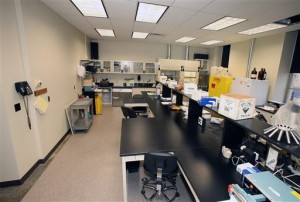On September 1, 2013, the American Bar Association released a report (click HERE for full article) about a recent string of crime lab scandals, and how they may affect the rest of the forensic science community. Forensics has been questioned for years, but the issues seem to be coming to a breaking point.
Police crime lab problems are far from isolated. Labs are routinely being investigated in cities around the country: Boston, Colorado, San Francisco, St. Paul, Oklahoma City, San Francisco, New York City, and many others. Problems range from dirty, contaminated lab equipment, untrained or under-trained analysts, poor-quality standards or seemingly no scientific standards at all. In some cases, labs have even falsified results and lab documents for tests that were never run. Fraudulent and misleading testimony routinely given in court to hide these shortcomings makes these situations even more appalling.
Although DNA is the most highly regulated of the forensic sciences, bad forensics plays a role in about 55% of exonerations (according to the Innocence Project). Many other areas are much more unregulated, a fact that has been highly criticized in recent years.
Legal scholars and professionals have found that these problems are systemic. Since legal institutions have accepted these practices and standards for so long, they are very difficult to change. Underfunded and poorly staffed labs are pressured to meet high caseload demands. Worse, institutional bias is commonplace. Analysts and prosecutors develop close working relationships, erasing the analyst’s ability to be objective. One study cited in the ABA article found the following trends: lab testimony is coached by prosecutors to improve conviction rates. Prosecutors often write performance reviews for analyst testimony, increasing pressures to conform. Lab work and results are pressured to reflect and support case theories, rather than the other way around. The adversarial process is extended to lab analysts too; prosecutors (whether deliberately or not) frequently promote an anti-defense expert sentiment with labs. This reinforced “us” versus “them” mentality often pressures analysts to stay silent when lab work issues arise.
Jill Spriggs is the past president of ASCLD (American Society of Crime Lab Directors), a national lab accrediting body. She explains that “accreditation alone won’t do the job…Crime labs must engage in rigorous hiring practices, including detailed background checks on prospective employees, and have strong monitoring and management procedures in place to detect quality control issues early on.”
Yet even ASCLD/LAB accreditation standards are called into question. Prominent New York attorney Marvin Schechter has referred to ASCLD/LAB as a a purveyor of a “seal of approval” which serves more to bolster court testimony and protect against outside inquiry or investigation. Evidence and testimony are clearly lacking, yet they are still used to obtain verdicts. Bills are pending before Congress demanding better forensic science standards, and stricter accreditation requirements. Is forensic science reform on the horizon? Hopefully. Stay tuned.
Poor-quality crime lab work here in Arizona has recently led to blood results thrown out in 11 Scottsdale DUI cases. But shoddy forensic work used in court can have many more consequences than potentially dismissing Scottsdale DUI cases. Forensic lab work includes analyzing DNA evidence, drug testing and identification, gunshot and blood spatter evidence, bodily fluid testing (including rape kits), etc. There is no telling how many cases will be affected by this recent ruling against the work done at Scottsdale Crime Lab.


